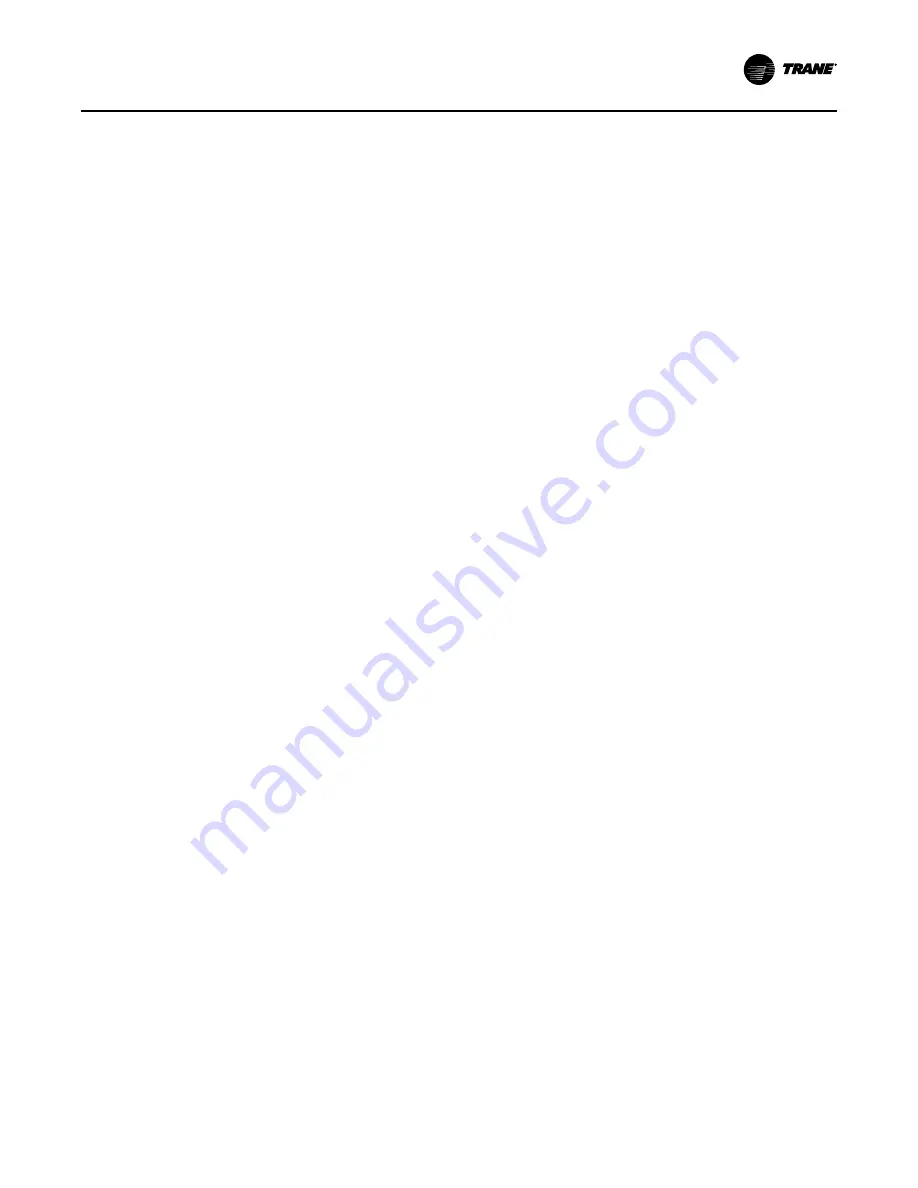
SS-SVX11K-EN
111
g. Subtract the total charge already added from
the table in Preliminary Charging section charge
estimate for condensing unit at the appropriate
piping length. Add no more R-410A than 1/2 of
this difference at a time.
h. With all the circuit compressors operating,
SLOWLY meter R-410A into the suction line
from the LIQUID charging connection. Add no
more than 1/2 of the difference from
above. Then allow the unit to run for 10
minutes, and plot the new operating point on
. Use an accurate scale to
measure and record the amount of R-410A
added.
i.
Repeat
, adding smaller increments of
refrigerant until circuit operation is
approximately on the appropriate line of
. As the charging line is approached,
smaller increments of refrigerant will move the
operating point more.
N
No
otte
e:: This procedure results in less subcooling
than previous split system charging methods.
Note that using this charging method will at
times result in bubbles at sight glasses
installed just upstream of expansion valves;
especially during lower ambient operation,
part load, and for systems with evaporators
located above condensing units. This
charging procedure will maximize the usable
operating envelope of the R-410A RAUJ units.
IIm
mp
po
orrtta
an
ntt:: Do not release refrigerant to the
atmosphere! If adding or removing
refrigerant is required, the service
technician must comply with all
Federal, State, and local laws. Refer to
general service bulletin MSCU-SB-1
(latest edition).
j.
Record the total charge added to the circuit.
k. If applicable, repeat steps
through
on the second refrigeration circuit.
l.
If in
. the fan pressure control switches
were disabled to allow for charging below 80°F
outdoor temperature, disconnect unit power
and reconnect the control wiring for these fans
at this time. Follow the procedures discussed
earlier to confirm proper rotation of these
condenser fans.
12. After the unit has been operating for approximately
30 minutes at full load with all condenser fans
running, record the operating pressures. Operating
pressures should be /- 10 Psig of the
appropriate pressure curve in
Measure and record the system subcooling and
superheat as described in the following sections.
13. Verify that the oil level in each compressor is
correct. As a minimum, oil must be visible in the
sight glass.
14. Once the checks and adjustments for the operating
circuit has been completed, check and record the
following data on the maintenance log shown at the
end of the chapter. Repeat these procedures for the
second refrigeration circuit, if applicable.
•
ambient temperature;
•
compressor oil level (each circuit);
•
compressor suction and discharge pressures
and liquid line temperatures (each circuit);
•
superheat and subcooling (each circuit);
15. Turn the 115-volt control circuit switch 1S2 to the
“OFF” position and open the field provided or
optional factory mounted disconnect switch.
16. After shutting the system off, check the compressor
oil appearance. Discoloration of the oil indicates
that an abnormal condition has occurred.
a. If the oil is dark and smells burnt, it has
overheated because of: compressor operating at
extremely high condensing temperatures; high
superheat; a compressor mechanical failure; or,
occurrence of a motor burnout.
b. If the oil is black and contains metal flakes, a
mechanical failure has occurred. This symptom
is often accompanied by a high compressor
amperage draw.
c. If a motor burnout is suspected, use an acid test
kit to check the condition of the oil. Test results
will indicate an acid level exceeding 0.05 mg
KOH/g if a burnout occurred.






























